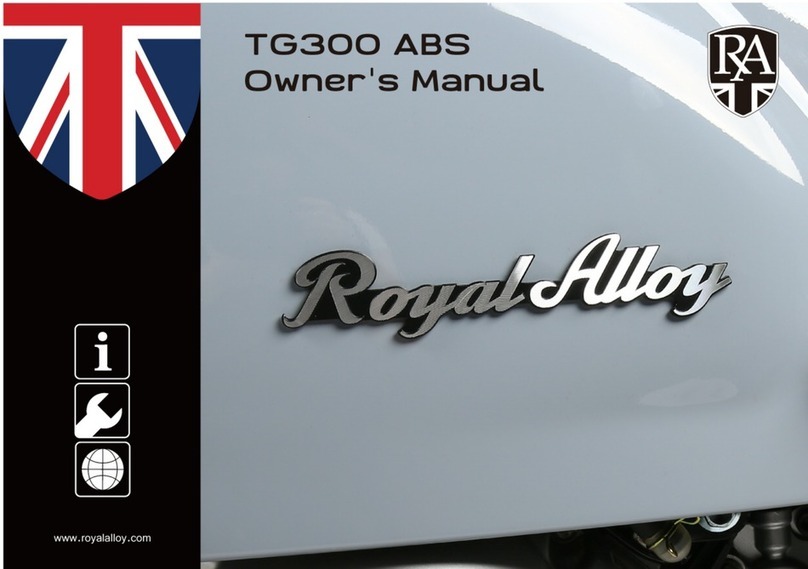
3
NOTICE
............................................................................ 1
INTRODUCTION
............................................................2
TABLE OF CONTENTS
................................................. 3
VEHICLE SAFETY
Accessories, Modification, Noise Regulation......................4
Loading, Maintenance, Pre-ride Inspection .......................5
Carbon Monoxide Gas........................................................ 5
SAFE RIDING
WearSafetyGear, Make Yourself Visible.....................
.
6
KnowYourLimits,RoadConditions................................. 6
IDENTIFICATION NUMBERS
...................................... 7
VEHICLE LAYOUT
IgnitionSwitch..............................................................
.
8
Dashboard........................................................................ 9
Dashboard and Clock...................................
.................
.
10,11
Handlebar Controls......................................................... 12
FrontandRearBrakeControls....................................
.
13
Bag Hook, Seat Lock....................................................... 14
Primary Storage, Glovebox Storage...............................15
Fuel Fill, USB Charging................................................... 16
PRE-RIDE INSPECTION
Pre-ride Inspection Checklist.......................................... 17
Front BrakeInspectionandAdjustment.......................
.
18,19
Rear BrakeInspection andAdjustment........................ 19,20
PRE-RIDE INSPECTION (CONTINUED)
Throttle Inspection and Adjustment...................................... 21
Engine Oil Type, Level Check, and Fill ................................. 22
Tire Inspection and Pressure Adjustment............................. 23
Cable Inspection and Lubrication......................................... 24
Vehicle Center and Side Stand, Assembly Check................ 24
Fuel, Lighting, Switches, and Loading.................................. 25
OPERATION
Vehicle Operation, Engine Starting...................................... 26
Engine Run-in, Engine Life...................................................27
Engine Warm-up, Riding, Throttle........................................ 28
Braking................................................................................. 29
Engine Stop, Parking............................................................ 30
PERIODIC MAINTENANCE
Periodic Maintenance Key.................................................... 31
Periodic Maintenance Table................................................. 32
Periodic Maintenance Table Continued................................ 33
Air Cleaner, Gear Oil, Transmission......................................34
Spark Plug, Brake Check...................................................... 35
Brake Fluid, Suspension....................................................... 36
Fuses, Battery, Battery Maintenance.................................... 37
Storage Guide....................................................................... 38
Maintenance Record.............................................................39
TECHNICAL DATA.....................................................
.
40
REPORTING SAFETY DEFECTS.............................
..
41




























